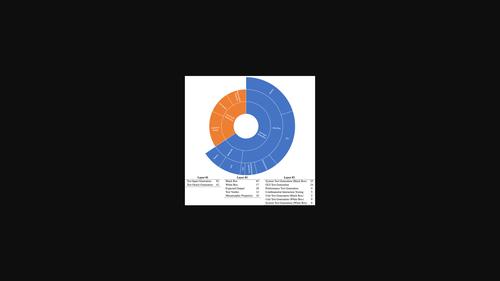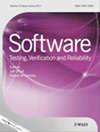机器学习与自动化测试生成的集成:一个系统的映射研究
IF 1.2
4区 计算机科学
Q3 COMPUTER SCIENCE, SOFTWARE ENGINEERING
引用次数: 0
摘要
机器学习(ML)可以实现有效的自动化测试生成。我们描述了新兴的研究,检查测试实践,研究人员的目标,机器学习技术的应用,评估和挑战在这个交叉点通过执行。我们对124份出版物的样本进行了系统的制图研究。ML为系统、GUI、单元、性能和组合测试生成输入,或者改进现有生成方法的性能。机器学习还用于生成测试结论、基于属性和预期输出的预言。监督学习(通常基于神经网络)和强化学习(通常基于Q学习)是常见的,一些出版物也采用无监督或半监督学习。(半/非)监督方法使用传统测试指标和机器学习相关指标(例如,准确性)进行评估,而强化学习通常使用与奖励函数相关的测试指标进行评估。迄今为止的工作显示出巨大的希望,但在训练数据、再训练、可扩展性、评估复杂性、所使用的ML算法以及它们如何应用、基准测试和可复制性方面存在着开放的挑战。我们的发现可以作为该领域研究人员的路线图和灵感。本文章由计算机程序翻译,如有差异,请以英文原文为准。

The integration of machine learning into automated test generation: A systematic mapping study
Machine learning (ML) may enable effective automated test generation. We characterize emerging research, examining testing practices, researcher goals, ML techniques applied, evaluation, and challenges in this intersection by performing. We perform a systematic mapping study on a sample of 124 publications. ML generates input for system, GUI, unit, performance, and combinatorial testing or improves the performance of existing generation methods. ML is also used to generate test verdicts, property‐based, and expected output oracles. Supervised learning—often based on neural networks—and reinforcement learning—often based on Q‐learning—are common, and some publications also employ unsupervised or semi‐supervised learning. (Semi‐/Un‐)Supervised approaches are evaluated using both traditional testing metrics and ML‐related metrics (e.g., accuracy), while reinforcement learning is often evaluated using testing metrics tied to the reward function. The work‐to‐date shows great promise, but there are open challenges regarding training data, retraining, scalability, evaluation complexity, ML algorithms employed—and how they are applied—benchmarks, and replicability. Our findings can serve as a roadmap and inspiration for researchers in this field.
求助全文
通过发布文献求助,成功后即可免费获取论文全文。
去求助
来源期刊

Software Testing Verification & Reliability
工程技术-计算机:软件工程
CiteScore
3.70
自引率
0.00%
发文量
34
审稿时长
>12 weeks
期刊介绍:
The journal is the premier outlet for research results on the subjects of testing, verification and reliability. Readers will find useful research on issues pertaining to building better software and evaluating it.
The journal is unique in its emphasis on theoretical foundations and applications to real-world software development. The balance of theory, empirical work, and practical applications provide readers with better techniques for testing, verifying and improving the reliability of software.
The journal targets researchers, practitioners, educators and students that have a vested interest in results generated by high-quality testing, verification and reliability modeling and evaluation of software. Topics of special interest include, but are not limited to:
-New criteria for software testing and verification
-Application of existing software testing and verification techniques to new types of software, including web applications, web services, embedded software, aspect-oriented software, and software architectures
-Model based testing
-Formal verification techniques such as model-checking
-Comparison of testing and verification techniques
-Measurement of and metrics for testing, verification and reliability
-Industrial experience with cutting edge techniques
-Descriptions and evaluations of commercial and open-source software testing tools
-Reliability modeling, measurement and application
-Testing and verification of software security
-Automated test data generation
-Process issues and methods
-Non-functional testing
 求助内容:
求助内容: 应助结果提醒方式:
应助结果提醒方式:


